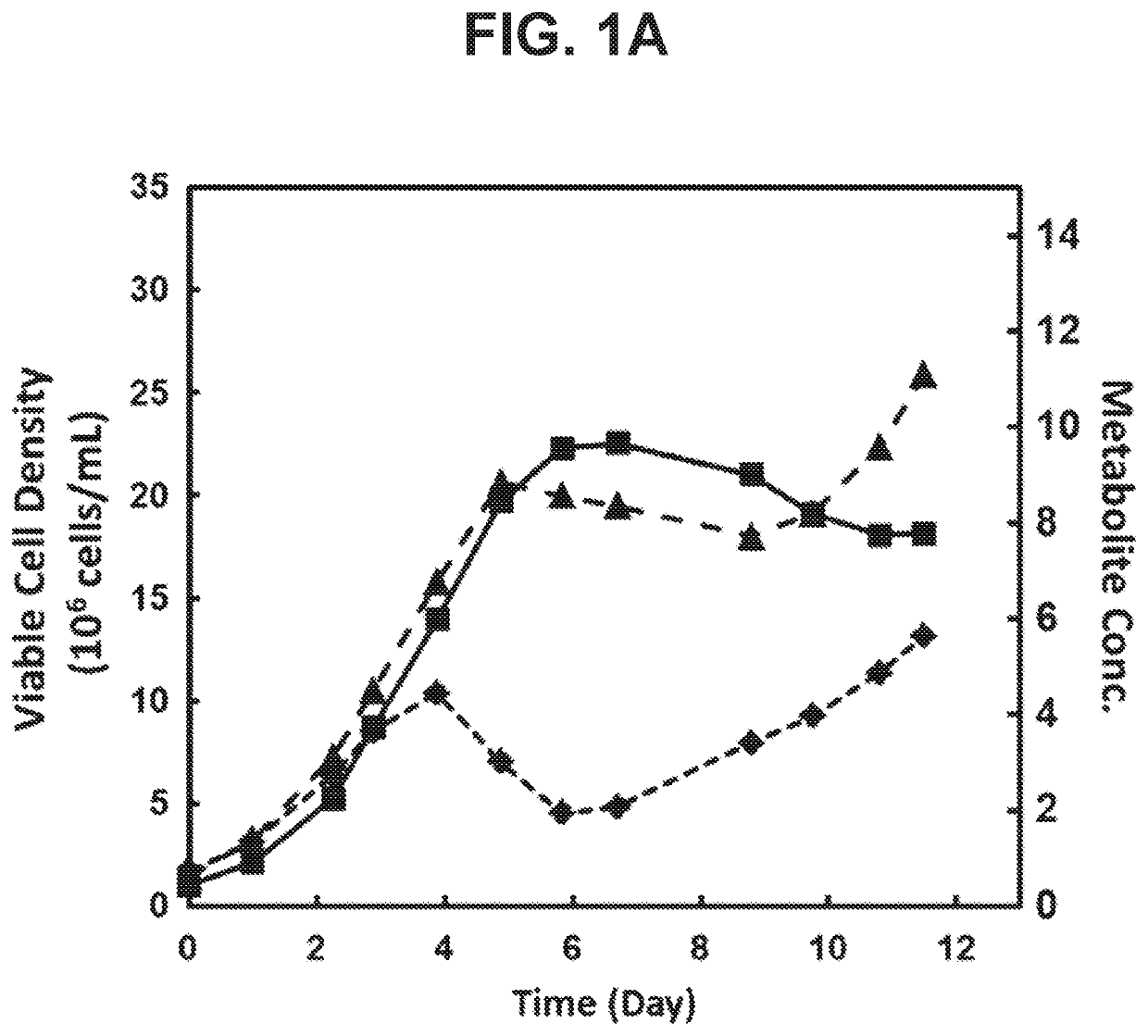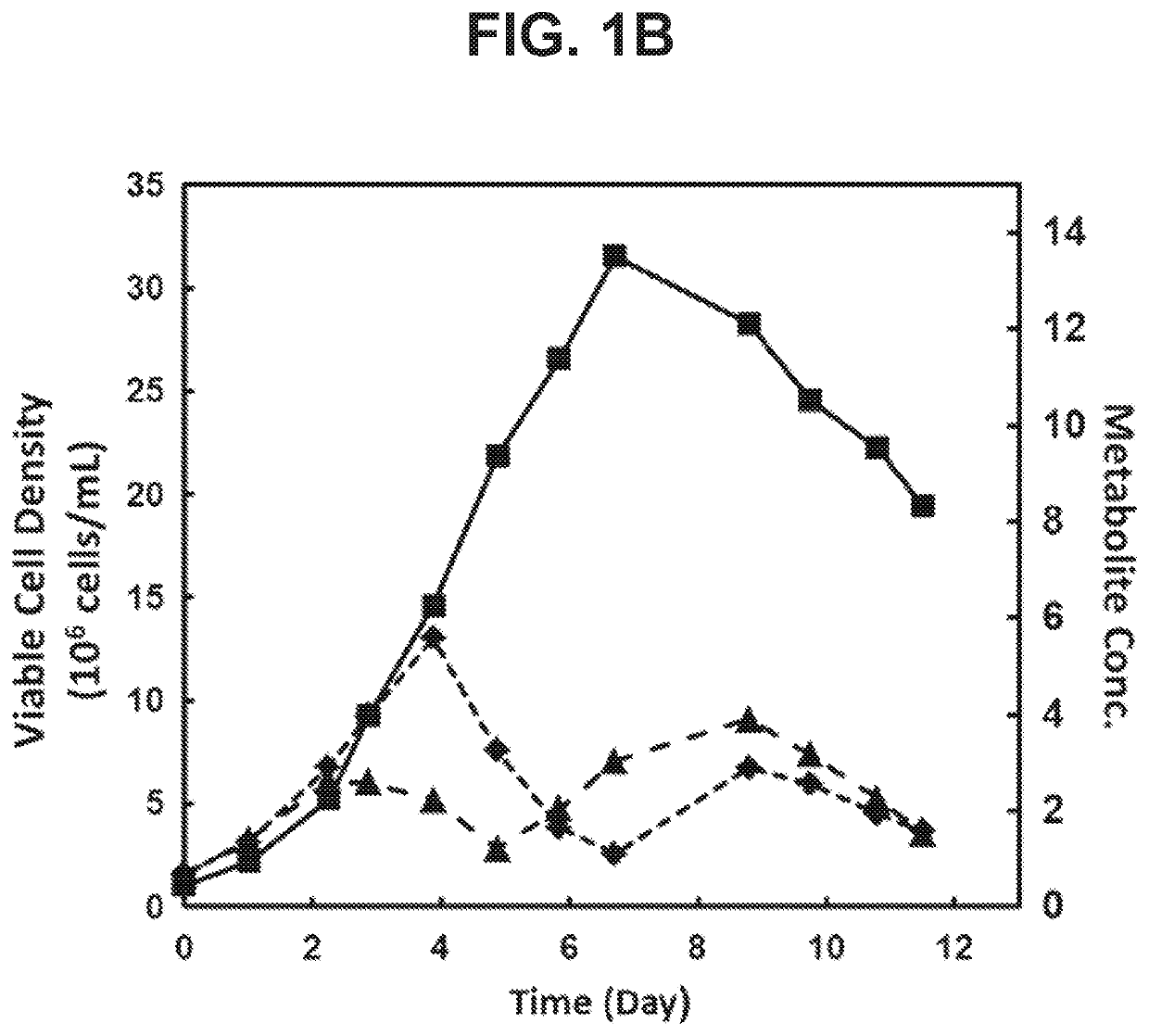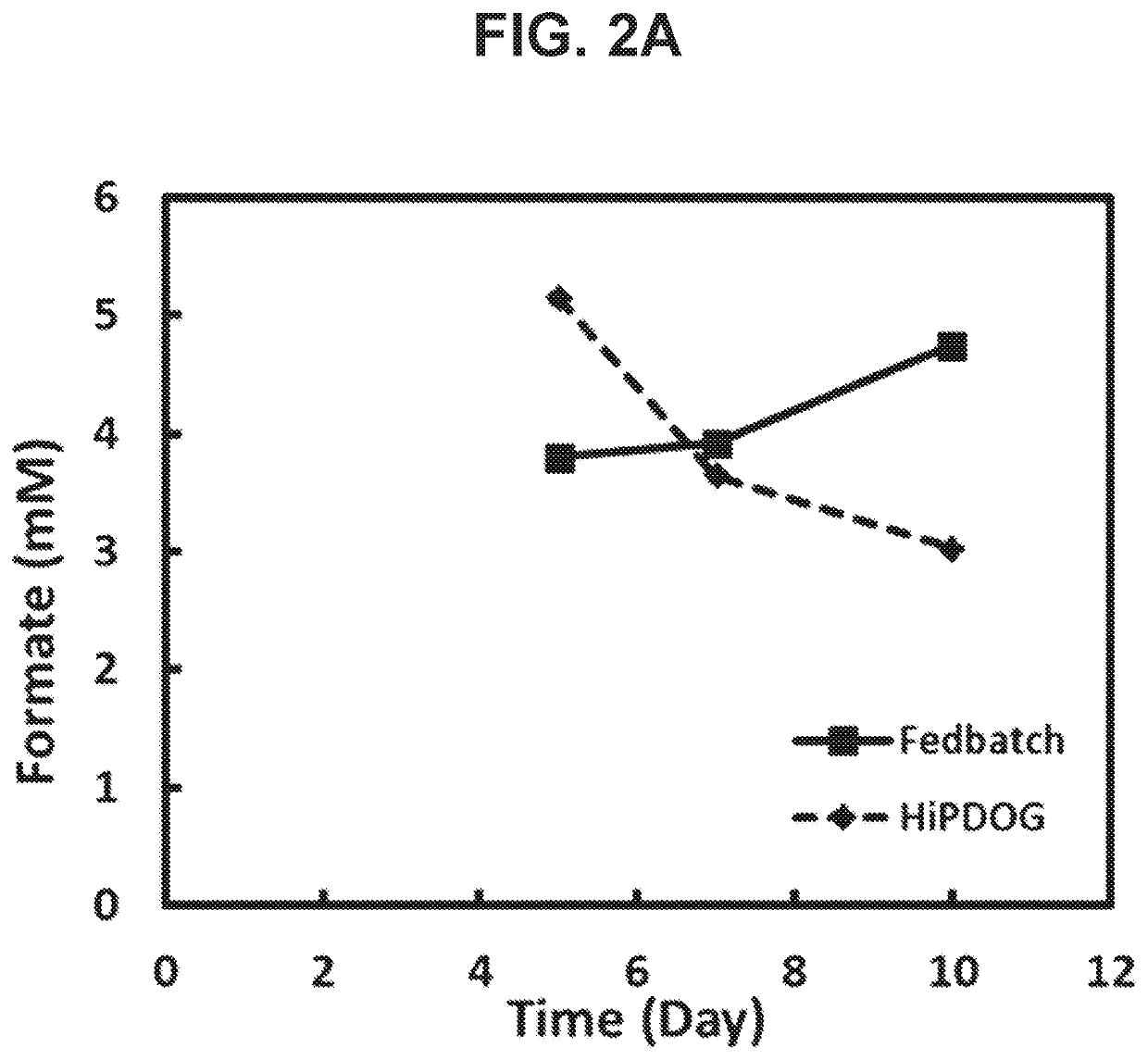Cells with reduced inhibitor production and methods of use thereof
a technology of inhibitors and cells, applied in the field of cell culture, can solve the problems of large amount of nutrient consumption, slow down, and inefficient metabolism of cells, and achieve the effects of reducing the level of synthesis of growth or productivity inhibitors, reducing gene expression, and reducing the expression of gene phosphoglycolate phosphatase (pgp)
- Summary
- Abstract
- Description
- Claims
- Application Information
AI Technical Summary
Benefits of technology
Problems solved by technology
Method used
Image
Examples
example 1
[0164]Formate and glycerol as Metabolic Byproducts Accumulating in Fedbatch (HiPDOG) Cultures of CHO Cells
[0165]Goal
[0166]This experiment was carried out to identify the levels to which formate and glycerol accumulate in the glucose-restricted and conventional fed-batch cultures of mammalian cells.
[0167]Materials and Methods
[0168]Cells and Medium
[0169]CHO cells utilizing a glutamine synthase expression system and expressing a recombinant antibody were used in the current experiment. Two types of medium were used in this experiment. First medium is “Medium A” which is used for inoculation of the experiment on day 0 of the culture. Second medium is “Medium B” which is the enriched nutrient media used as a feed media for conventional and HIPDOG fed-batch processes (described in the next section).
[0170]Medium A is a fortified version of insulin-free Medium 9 (U.S. Pat. No. 7,294,484, table 14), with slight differences in concentrations of sodium bicarbonate and potassium chloride, and c...
example 2
[0183]Probing the Effect of formate and glycerol on Proliferative Capability of CHO Cells in Culture
[0184]Goal
[0185]Formate and glycerol are byproducts of serine catabolism and glycolysis pathways, respectively, which were observed to accumulate in the HiPDOG and conventional fed-batch cultures of CHO cells. In these cultures, the peak level of accumulation observed for formate and glycerol were 5 mM and 10 mM, respectively. This experiment was setup to probe the effect of these two compounds, individually, on growth of CHO cells within or below the concentration range observed in the HiPDOG or conventional fed-batch cultures.
[0186]Materials and Methods
[0187]CHO cells (cell line A or cell line B) producing a recombinant antibody were inoculated at low cell densities (0.1 E6 cells / mL) in various conditions in triplicates in 6-well plate cultures. The working volume for each well on day 0 was 4 mL. Cell line A was inoculated either in fresh Medium A or fresh Medium A supplemented with...
example 3
[0190]Assessing the Accumulation of formate Through Limitation of serine supplementation in Fed-Batch Cultures of CHO Cells.
[0191]Goal
[0192]The main goal of this example was to assess reduction in the accumulation of formate in HiPDOG cultures of CHO cells by limiting the supply of the serine.
[0193]Materials and Methods
[0194]Cells and Bioreactor Setup
[0195]CHO cells (cell line C) expressing a recombinant antibody were used in this example. Two conditions were tested as part of this example: A) HiPDOG culture with low levels of 10 amino acids including serine (Low AA), B) HiPDOG culture with normal amino acids concentrations (Control). The experiment was carried out for 12 days.
[0196]Exponentially growing cells from seed cultures were inoculated at about 1×106 cells / mL into production bioreactors that employed a typical fed-batch process (with typical levels of amino acids) or the low amino acid fed-batch process. In the low amino acid condition, the concentrations of 10 amino acids ...
PUM
| Property | Measurement | Unit |
|---|---|---|
| volume | aaaaa | aaaaa |
| volume | aaaaa | aaaaa |
| volume | aaaaa | aaaaa |
Abstract
Description
Claims
Application Information
 Login to View More
Login to View More - R&D
- Intellectual Property
- Life Sciences
- Materials
- Tech Scout
- Unparalleled Data Quality
- Higher Quality Content
- 60% Fewer Hallucinations
Browse by: Latest US Patents, China's latest patents, Technical Efficacy Thesaurus, Application Domain, Technology Topic, Popular Technical Reports.
© 2025 PatSnap. All rights reserved.Legal|Privacy policy|Modern Slavery Act Transparency Statement|Sitemap|About US| Contact US: help@patsnap.com



